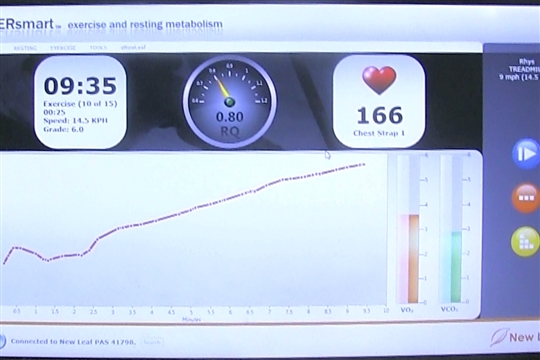Monitoring for Tennis Players

For a Tennis player who is in a training/competition programme, it is vital that a number of measurements are taken and recorded on a regular basis. Short term changes are indicators of potential health problems or over-training. Long term trends are an aid to planning future physical training programmes.
Resting Pulse Rate - the resting pulse rate should be taken first thing in the morning and recorded.
Sudden increases in resting pulse may indicate a health problem for example the start of a cold or flu.
A sudden increase may be a sign of over training when the body has not fully recovered.
As a players fitness improves the Resting Pulse Rate will decrease.
The resting pulse rate should be recorded on a daily training log.
Rate of Perceived Exertion - a record of how hard a player is training/competing, recorded at the end of each day on a training log, on scale of 6-20. Helps to identify over-training.
Height - a record of the players growth will enable to identify when a growth spurt is in progress.
If records are kept, it can be identified when a junior player has past their peak rate of growth and resistance training can increased.
The height should be recorded monthly.
Weight - recorded monthly.
Body Mass Index, calculated from the players Height and weight, used to indicate if the player is over/under weight. Recorded monthly. (Note, BMI norms are quoted for the average population, once an athlete increases muscle mass, the norms are not appropriate!)
Percentage Body Fat - measured using commercially available equipment. Used to determine the players body composition and indicate if the player is over/under weight. Recorded monthly.
Lung Peak Flow Rate - a measure of lung capacity, recorded in Litre/Min.
Measured using commercially available equipment.
As a player develops aerobic capacity through training, the Lung Capacity will increase.
The Peak lung flow rate should be recorded monthly.
Height, weight, % Body Fat and lung capacity should be measured and formally recorded twice a year, and monitored every month. The formal recording is done using a spread sheet which plots the results.
There are a number of devices which monitor and record, movement, pulse rate and location. These are useful to see what is happening to your player.
The Nike sports watch has an inbuilt GPS system and a stride/step monitor, with optional heart rate monitor it is particularly useful to determine how the players body is stressed during exercises.
Another device which is useful for Tennis is the Adidas Micoach Speed_Cell, which can record speed of movement. It is particularly useful when performing the standard Tennis Agility/Speed drills.
Look in Junior Coaching and Adult Coaching for current courses.